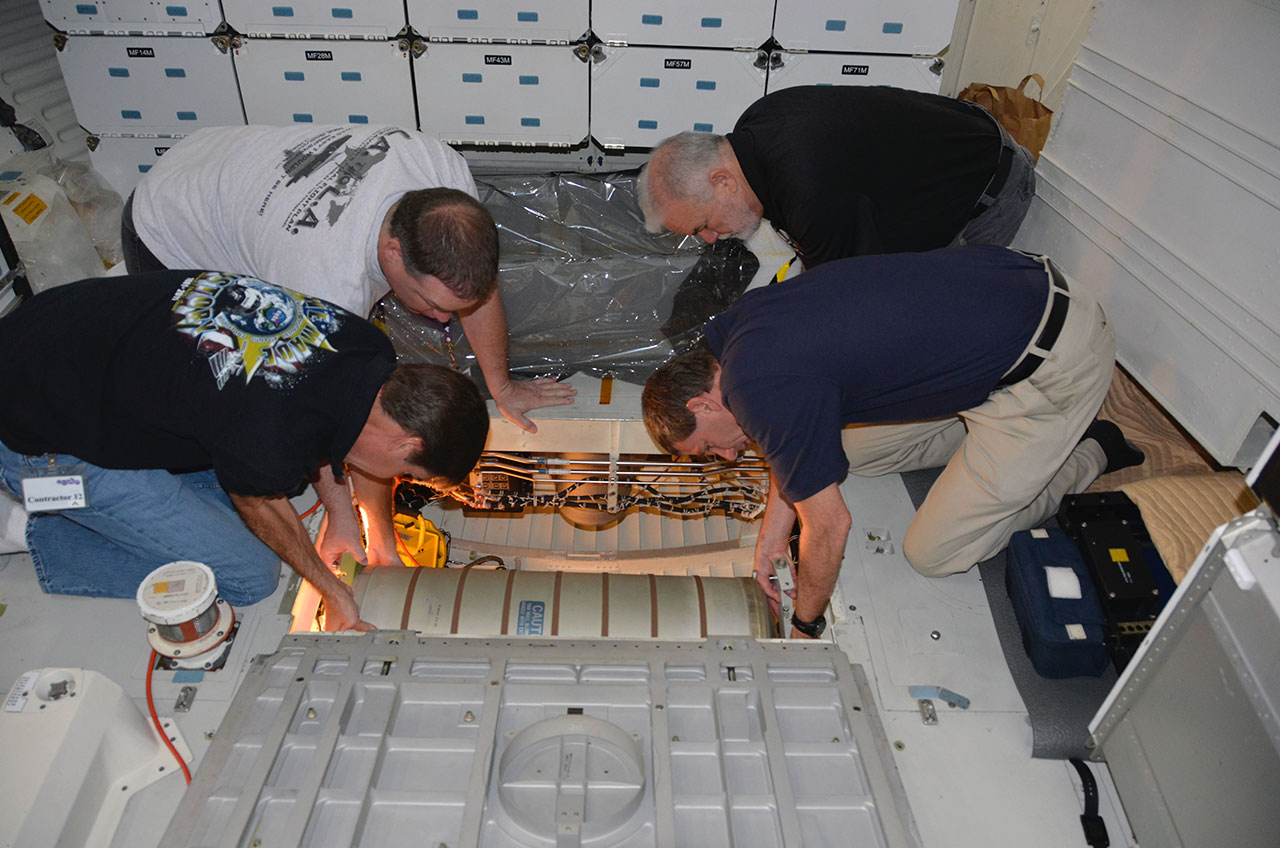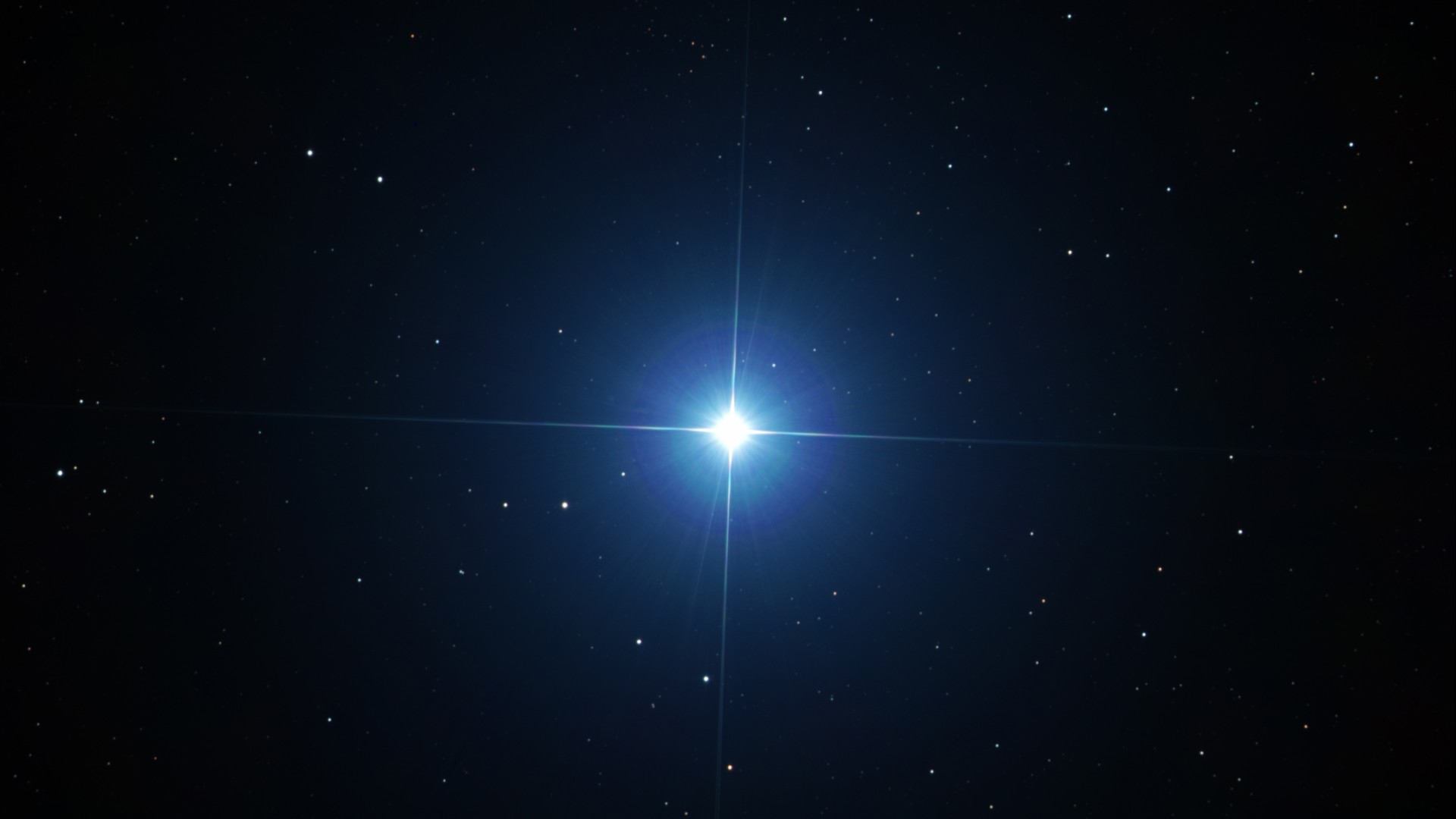NASA Reinstalls Water Tank Reclaimed from Space Shuttle Endeavour

One year after its removal from the space shuttle Endeavour, a metal water tank has been returned by NASA to the California Science Center and reinstalled inside the retired orbiter.
The tank, which was used to collect waste water during Endeavour's missions in Earth orbit, was extracted from under the shuttle's crew cabin in August 2015, at the same time that four similar potable water tanks were also removed. [Photos: NASA Reinstalls Space Shuttle Endeavour’s Water Tank]
NASA requested the return of the tanks so that they could be reused as part of a planned water storage system for the International Space Station. Additional tanks were also removed from space shuttle Atlantis on display at the Kennedy Space Center Visitor Complex in Florida. (The space shuttle Discovery, exhibited by the Smithsonian's National Air and Space Museum, was left intact as the engineering vehicle of record.)
The station water storage system, which according to NASA may be launched as soon as early- to mid-2018, is intended to replace the current process of storing the astronauts' drinking supply in soft, duffle-like bags that are time consuming to fill. The new system's software will feed water from the space station's recycler to the tanks, without the need for the crew's involvement.
The waste water tank was removed from Endeavour and shipped to the Kennedy Space Center in 2015 so that some of its sensor and wiring components could be removed to serve as spares for the space station system. NASA agreed to return the waste water tank to the California Science Center once its usable parts were reclaimed.

Endeavour has been on display at the California Science Center since 2012. The center is planning to mount the winged orbiter on NASA's last remaining built-for-flight external tank, delivered in May, and a pair of solid rocket boosters to create the world's only vertical display of a fully-authentic space shuttle.Members of NASA's test and operations support team were in Los Angeles this week to reinstall the waste water tank. Just as it was removed a year ago, the 3-foot-long (0.9 meter) tank was carried into Endeavour through the crew hatch and then lowered under the mid-deck floor through a removable locker once used to hold the canisters that scrubbed the shuttle's air supply of carbon dioxide.
The Endeavour exhibit, to be housed in the future Samuel Oschin Air and Space Center, is slated to open to the public in 2019.
Get the Space.com Newsletter
Breaking space news, the latest updates on rocket launches, skywatching events and more!
See more photos of the tank’s reinstallation in space shuttle Endeavour at collectSPACE.
Follow collectSPACE.com and Facebook and on Twitter at @collectSPACE. Copyright 2016 collectSPACE.com. All rights reserved.
Join our Space Forums to keep talking space on the latest missions, night sky and more! And if you have a news tip, correction or comment, let us know at: community@space.com.

Robert Pearlman is a space historian, journalist and the founder and editor of collectSPACE.com, a daily news publication and community devoted to space history with a particular focus on how and where space exploration intersects with pop culture. Pearlman is also a contributing writer for Space.com and co-author of "Space Stations: The Art, Science, and Reality of Working in Space” published by Smithsonian Books in 2018.In 2009, he was inducted into the U.S. Space Camp Hall of Fame in Huntsville, Alabama. In 2021, he was honored by the American Astronautical Society with the Ordway Award for Sustained Excellence in Spaceflight History. In 2023, the National Space Club Florida Committee recognized Pearlman with the Kolcum News and Communications Award for excellence in telling the space story along the Space Coast and throughout the world.










